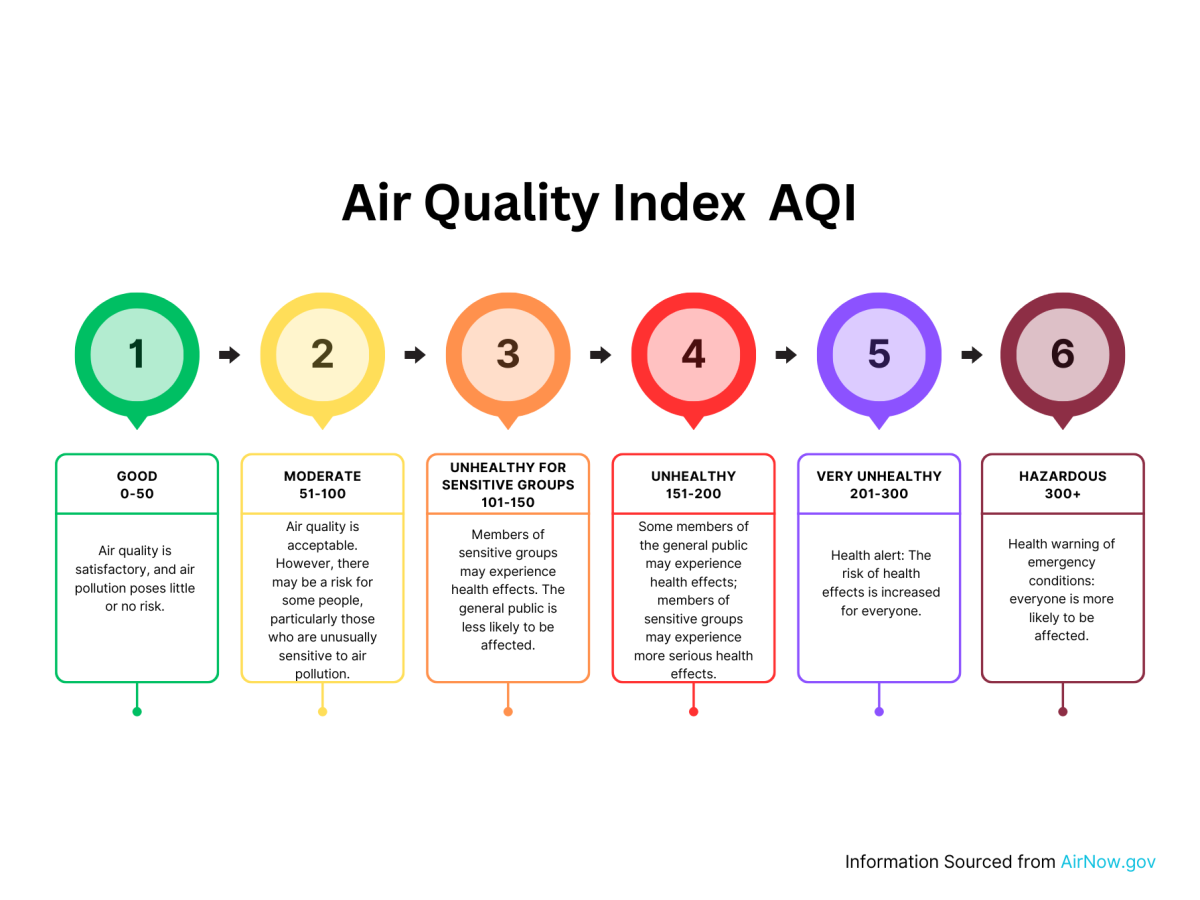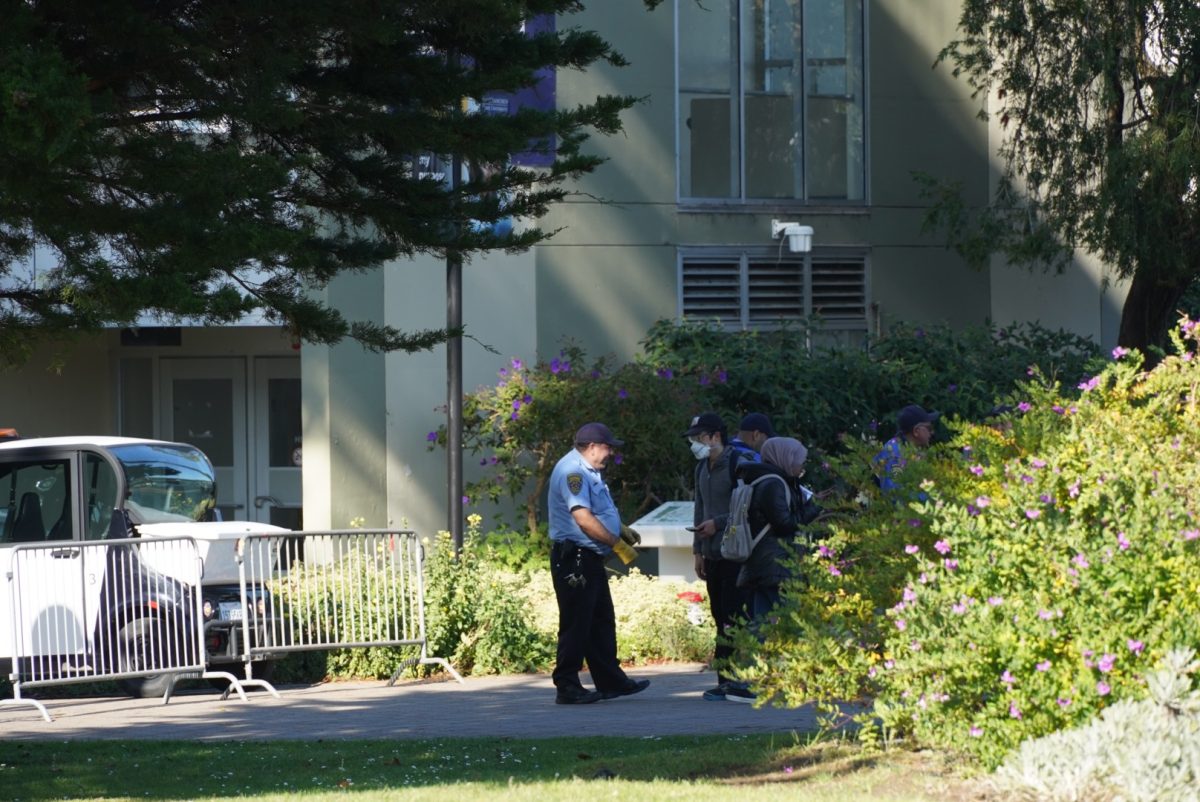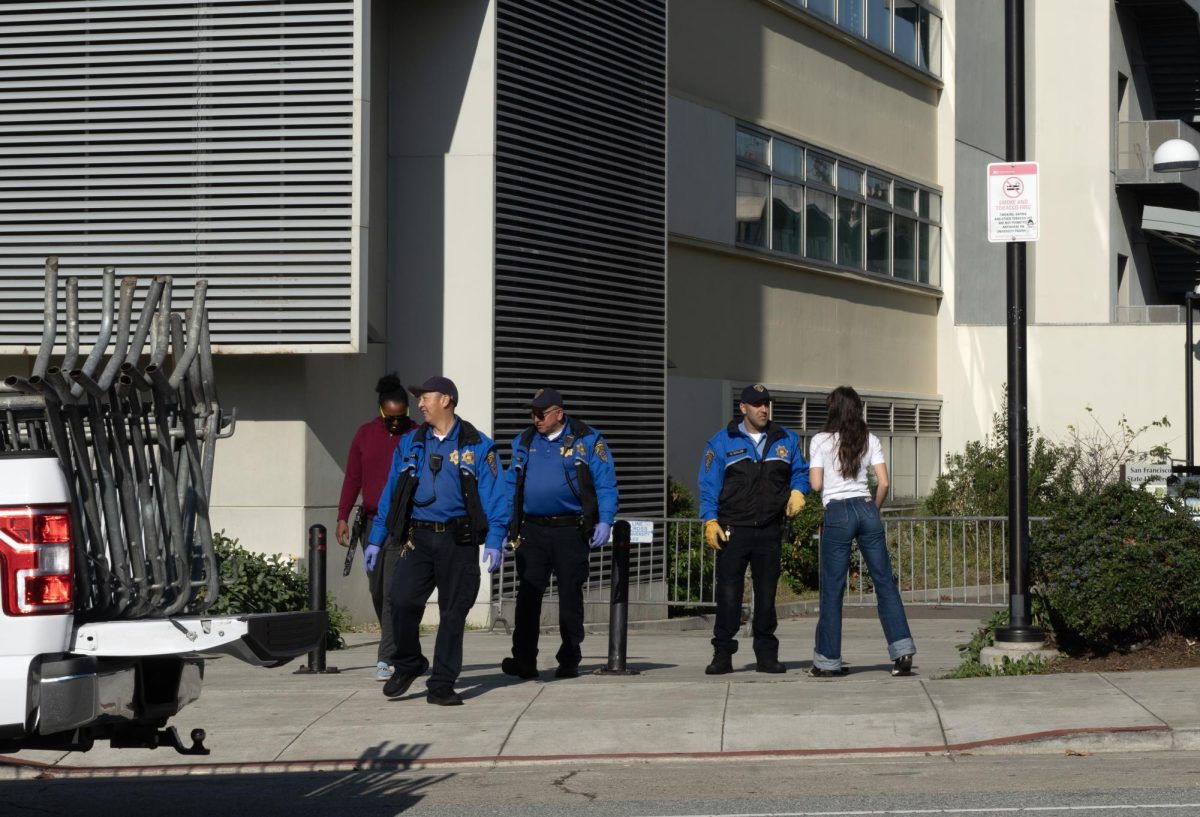The San Francisco State Office of Emergency Services issued a statement from the Bay Area Air Quality Management District on Tuesday morning, warning that the Air Quality Index reading was in the “low unhealthy” range. The email advised people with heart and lung conditions, the elderly, and small children to not go outside if it can be avoided.
The alert has been extended through Friday, according to the Bay Area Air Quality Management District.
OES is monitoring the issue closely and intends to act and inform the campus community as the situation develops.
“We try to align on what our local jurisdictions recommend,” said Hope Kaye, director of the Office of Emergency Services. “If San Francisco Department of Emergency Management is recommending something, we’re likely to align with that, with the understanding that, you know, people are commuting in from all different counties.”
One of the tools OES uses is Air Now, an Environmental Protection Agency-partnered website that disseminates air quality information across the U.S.

(Matthew Ali)
According to Air Now, the AQI currently sits at 86 which is a moderate range. According to Air Now’s AQI chart , 50 or below is considered normal. The chart starts at 0 and ends at a maximum of 300+.
“Air quality is unpredictable, but we generally –– because of the fact that SF State has some buildings without HVAC [heating, ventilation and air conditioning] –– have a lower threshold for taking classes to remote modalities,” said Bobby King, director of communications for SFSU President’s Office. “We haven’t really reached that point for any period of time yet this year, and for several years knock on wood, but they’re monitoring [it] constantly.”
According to Kaye, OES takes the information from Air Now, the National Weather Service and the Bay Area Air Quality Management District into consideration when responding to air quality incidents.
“Smoke from wildfires in Oregon and Northern California are expected to impact the Bay Area through Friday. These wildfires continue to generate a large amount of smoke which is being transported into the Bay Area,” wrote the Bay Air Quality Management District today in a press release.
For further updates, visit Air Now’s website and check your campus email for updates from the OES.









